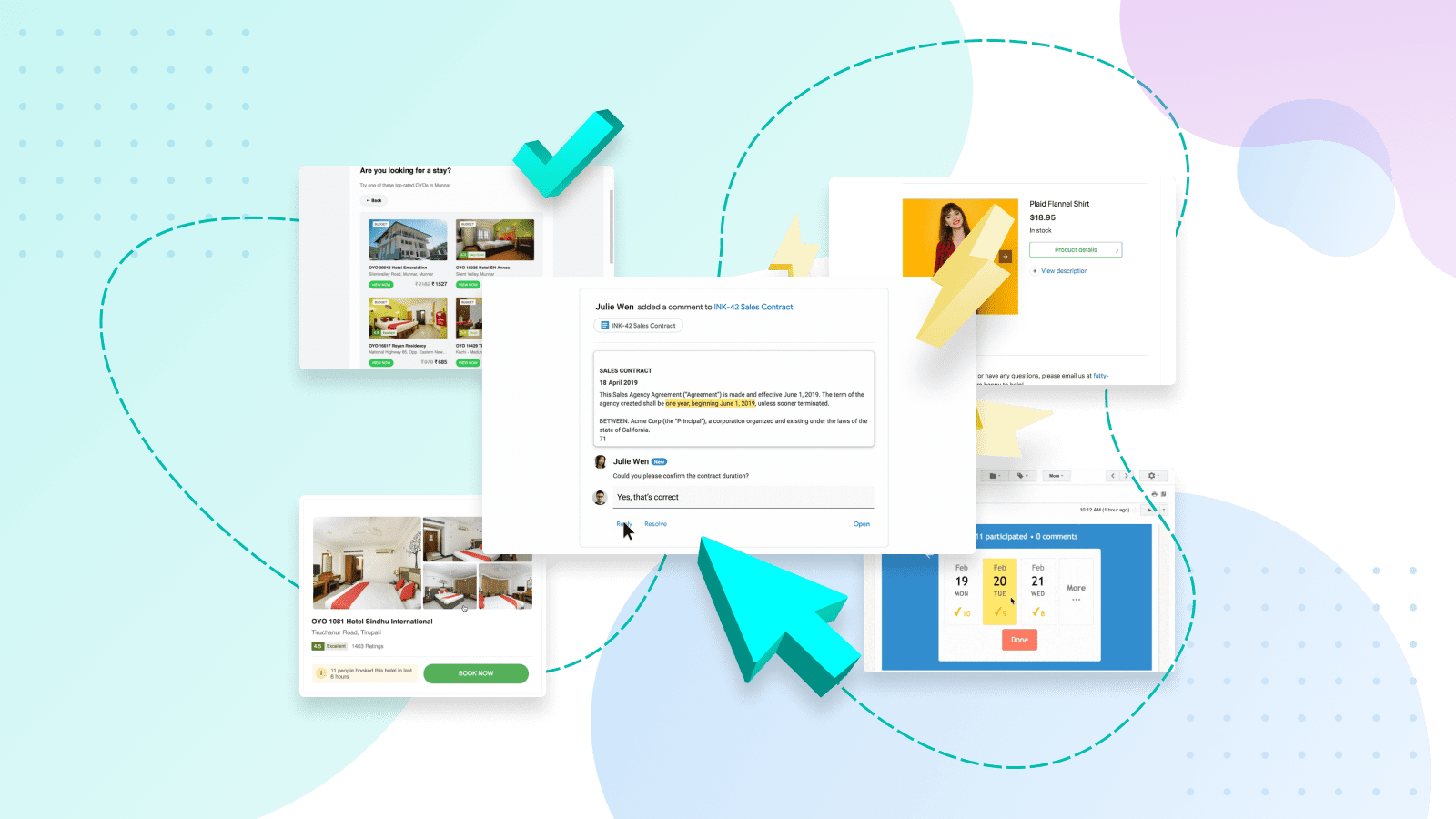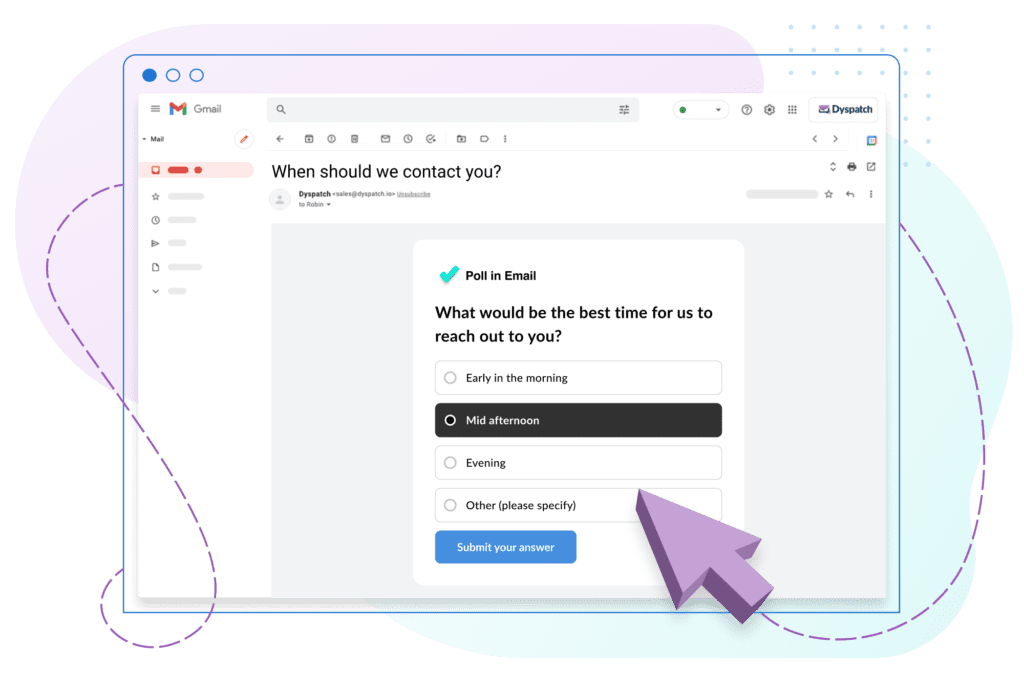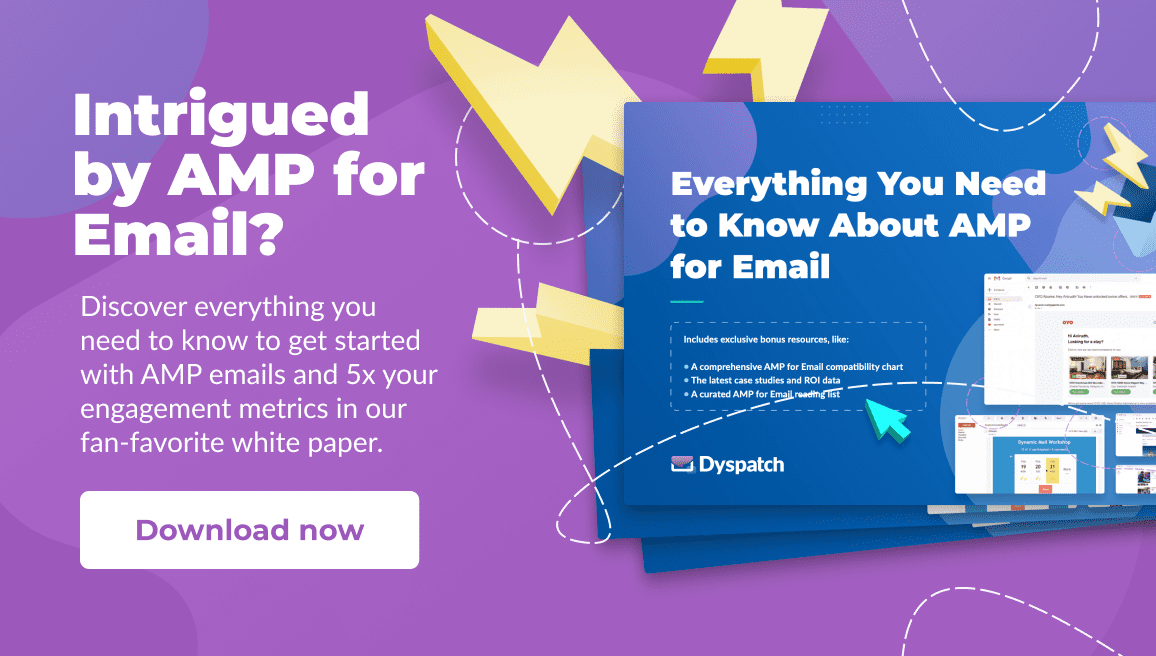We marketers like low-hanging fruit.
The easy opportunities that lead to big results. The hacks. The cheat codes. The secret formulas.
I don’t blame us. We’re busy people doing fast-paced work while trying to convince skeptical company leadership that our work is actually having an impact on the bottom line.
So when it’s time to decide whether or not to implement a shiny, new marketing tactic, it can be a big, hairy decision — especially when the marketing tactic requires additional work on top of what you’re already doing, and you’re not entirely sure it’ll be worth it.
But what if this marketing tactic is a homerun? A game changer. An epic cheat code. Proven to work.
A marketing tactic that levels up your entire email strategy and increases:
- Engagement by 500%
- Conversion rates by 60%
- Sales by 82%
I think we can all agree: That’s some serious low-hanging fruit.
Based on this post’s title, you probably know where I’m going with this. AMP for Email is this low-hanging fruit.
And the percentages above? Actual increases in performance thanks to AMP for Email.
In this post, I’ll walk you through five case studies that show off the power of AMP emails for unique industries and use cases.
Don’t believe me when I say AMP for Email works. Believe the data. Believe the results.
Related: Everything You Need to Know About AMP For Email
Case study #1: Google Docs
The case study
A prime example of AMP for Email in action comes directly from Google and their product Google Docs.
If you use Google Docs, you’ve likely received a notification email when someone comments on your Doc or makes a suggestion. This is actually a dynamic, interactive AMP email.
Inside the email, you can see and engage with a live, always-up-to-date comment feed. You can reply to comments and accept suggestions right within the email — without ever visiting the Google Doc. And if someone adds another comment to the Google Doc after you receive the notification email, you’ll still see that latest comment within the email.
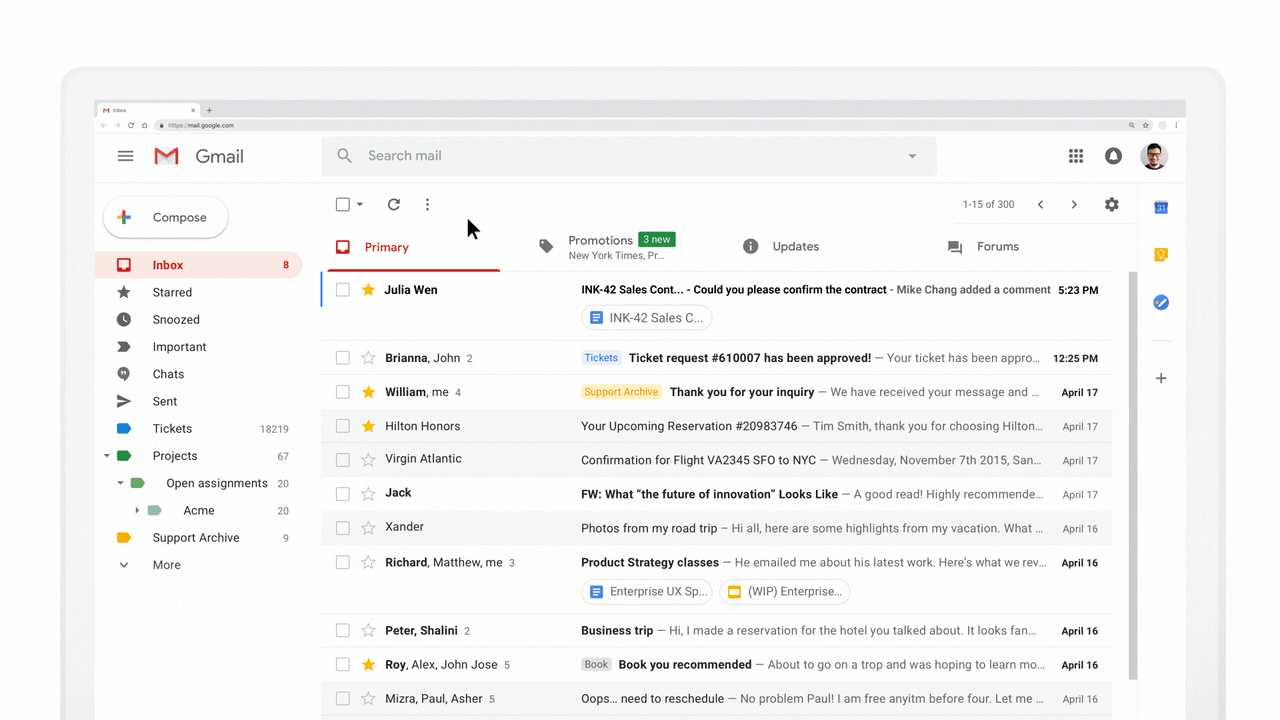
This decreases the number of steps it takes to reply to a comment. Instead of opening the email, clicking on the comment, visiting the doc, and then replying to the comment, you simply open the email, type your response, and hit reply.
In this scenario, AMP for Email is reducing friction and enhancing the user experience for Google Doc users.
The results
Google reported a 500% increase in comment responses after they added live AMP commenting in emails to the Google Docs platform.
More ways for SaaS companies to use AMP for Email
For software as a service (SaaS) companies, enhancing the user experience is vital. According to recent findings from Forrester Research, frictionless user experience (UX) design can raise customer conversion rates by up to 400%.
AMP for Email is a powerful, innovative way to improve the user experience. You can decrease the effort of using your SaaS product by including interactive and dynamic AMP components in your customer emails. Here are a few ways to do this:
- Allow users to complete simple actions within emails — like replying to in-app messages and approving and sending requests to other team members who use the platform.
- Share dynamic (always up-to-date) info or data — like usage or platform data and personalized recommendations based on platform usage or platform data.
- Request and collect user feedback directly from emails — like NPS scores, customer surveys, and more.
- Email users educational information — like knowledge base articles or blog posts with live feeds with comments from other customers.
Related: Apps in Email for SaaS
Case study #2: Ecwid
The case study
Ecwid is an ecommerce platform that allows over one million small businesses to easily create online stores and send automated emails to sell products on their websites, social media, and more.
Since their founding in 2009, Ecwid has consistently seen businesses face one challenge — reducing shopping cart abandonment.
Shopping cart abandonment is when a customer adds an item to their online cart, but doesn’t end up purchasing the item. It’s a big problem for ecommerce companies. Consumers abandon 69.57% of online shopping carts, according to Baymard Institute.
To help their customers fight cart abandonment, Ecwid began using AMP for Email in the automated cart abandonment emails they offer within their platform.
When their customers elect to send automated cart abandonment emails through Ecwid, these emails are now dynamic and interactive. Customers see a carousel of images showing the product they left in their cart. They can click through and zoom in on the images.
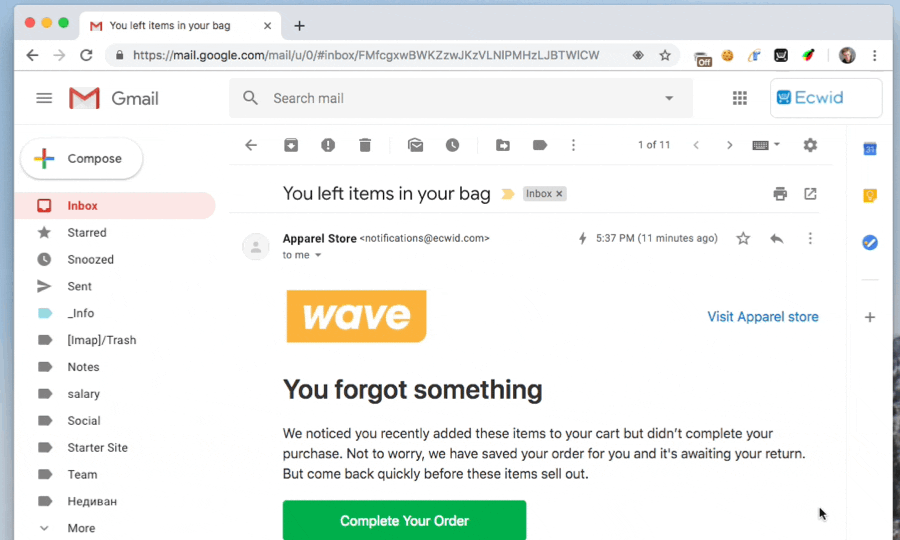
This makes it much easier for them to see every detail of the product they left in their cart — without the extra step of visiting a website.
Related: Ecwid merchants boost sales by 82% by using AMP for email for abandoned shopping carts
The results
Ecwid analyzed approximately 171,000 customer emails to see how the new AMP for Email cart abandonment emails impacted performance. They found sales from abandoned carts increased by 82% thanks to the addition of AMP for Email.
Certain customers benefited even more — like Dalon Xtensions who increased recovered sales by over 300%.
More ways for ecommerce companies to use AMP for Email
- Add image carousels to your emails to show off products. This is ideal for any email that displays products — like cart abandonment emails, new product announcement emails, and even sale campaign emails.
- Include dynamic information inside your emails to leverage urgency and scarcity — like the number of items left in stock for a certain product or a countdown timer to when a sale or discount ends.
- Collect product reviews directly from emails with live AMP for Email forms. This makes it even easier for customers to review products and increases the chances they’ll actually leave reviews.
- Put an “Add to Cart” button inside your emails. When customers click the button, the product will be added to their cart within your online store. Again, this makes it easier for customers to take action and increases the likelihood they’ll purchase.
Related: Apps in Email for Ecommerce
Case Study #3: Findomestic
Findomestic, a credit card company, wanted to improve their overall email marketing performance. Specifically, their email conversion rates. They stumbled on AMP for Email and thought it would be a powerful way to differentiate themselves from competitors in the inbox.
Findomestic decided to use AMP for Email to create an interactive email where users could calculate the financing rate of different types of loans, directly from their inbox.
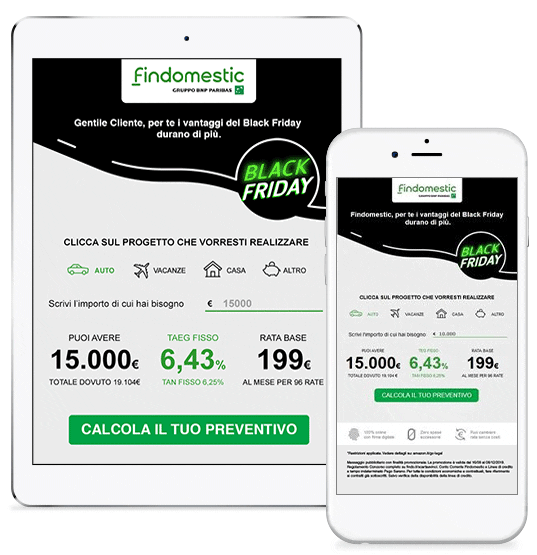
To see whether or not this interactive AMP email would impact performance, Findomestic set up an A/B test. They built a segment of email subscribers and separated them into two groups:
- Group A, or the control group. They received a standard HTML email that didn’t include interactive AMP elements. It was visually similar to the AMP email, but instead of a live calcular, contained a button that led visitors to the Findomestic website to calculate loan rates.
- Group B, or the experimental group. This group received an AMP email with an interactive loan rate calculator.
Related: Findomestic helps users find the banking product they need right from their email.
The results
The AMP Email, sent to group B, significantly outperformed the static control email, sent to group A. Interestingly, the AMP Email had a 128% higher open rate, as well as a 133% higher click-through rate.
These great results convinced Findomestic to invest more heavily in AMP for Email, and to use AMP throughout their entire email marketing strategy and processes.
More ways for financial companies to use AMP for Email
- Share ever-changing, public financial info in emails — like stock prices, bond prices, and more. AMP for Email can dynamically pull the most-up-to date information into your emails.
- Share private, always-up-to-date financial info. Let’s say you’re a banking company, and you typically send people an email with their account balance after they deposit money. Instead of sending a static email that doesn’t change after it reaches the inbox, you could send a dynamic AMP Email that updates when a user’s account balance changes.
- Add an interactive calculator to your emails that allows users to calculate loan amounts, spending, budgets, and more.
- Add a dynamic survey to your email to ask your users for more info about their financial needs or situation. Users can complete the form directly inside the email.
- Put a dynamic application form inside your emails. Users can complete the application right inside the email. You could use this for subscribers trying to apply for a loan or credit increase.
(Concerned about the security of AMP for Email with financial information? Read this post, 7 AMP for Email Myths, Debunked, to learn more about AMP for Email and security.)
Related: Apps in Email for Fintech
Case Study #4: OYO
OYO is a website where consumers can rent hotel rooms and homes for vacations. They also provide tech that allows small businesses and individuals to easily list and collect money when renting their properties.
Email marketing is a big part of OYO’s marketing strategy, but the ever-changing information in the travel industry — like rental prices, property ratings, and discounts — meant their emails quickly became outdated once they hit the inbox.
AMP for Email changed that. Now, OYO could include dynamic data within their emails that displayed up-to-date prices, ratings, and discounts whenever a user opened an email.
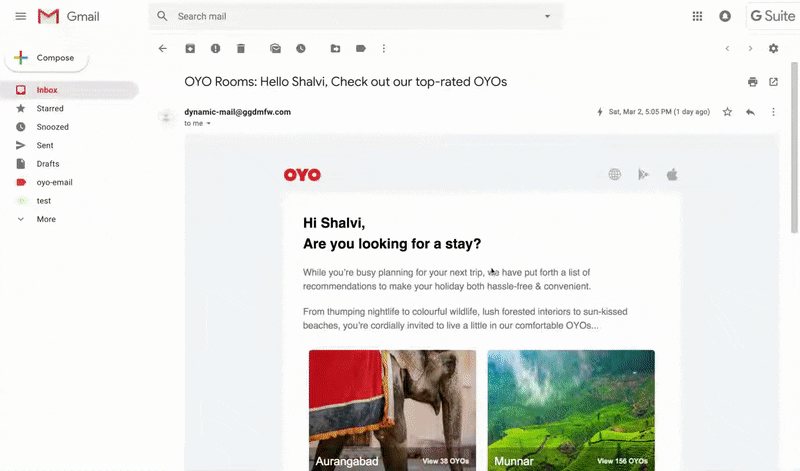
They also chose to level up their email design with interactive AMP content, like image carousels and dropdown menus that provided more information about hotel ratings when a user clicked within the email.
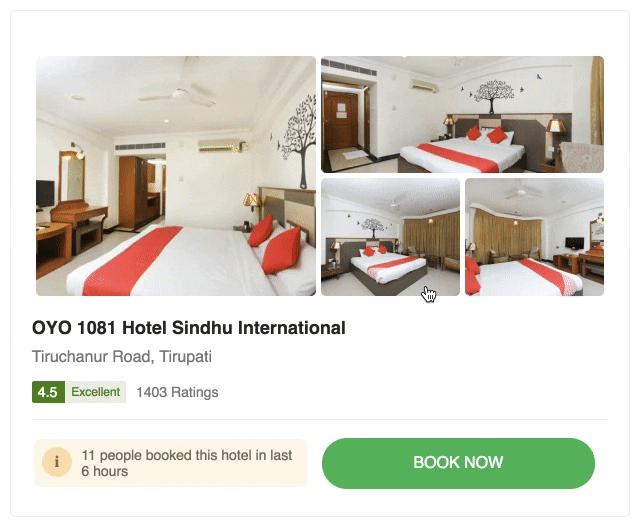
The results
When OYO tested AMP emails, they saw a 57% increase in click-through rates and 60% higher conversion rates.
More ways for travel companies to use AMP for Email
- Allow users to add hotels, rooms, experiences, and trips to their cart from an email. Subscribers never need to leave the inbox or the email to add items to their cart.
- Collect reviews and ratings from travel experiences. Using an AMP for Email form, you can easily collect reviews and ratings from inside an email.
- Share the most-up-to-date travel info in your emails. With dynamic AMP emails, you can pull relevant, up-to-date travel info from your website and display it for subscribers in the inbox. For example, if a gate or flight time changes, your confirmation email would update itself. You could even use this to display up-to-date Covid-19 information for the region where subscribers are traveling.
- Show even more travel photos with an image carousel. Beautiful photos sell trips. Share more photos in less space within your email by adding an interactive AMP image carousel to your email.
Related: Apps in Email for Travel
Case Study #5: Doodle (Plus, how this example applies to the fitness industry)
The fitness industry is another great place to use AMP for Email. Fifty-three percent of fitness business owners say they already use email campaigns to market their business. But AMP for Email is an underutilized email marketing strategy within this industry, which makes it an opportunity to stand out.
In fact, we couldn’t track down an AMP for Email case study from the fitness industry for this post.
That’s why, for this last example, I’m sharing another case study from the SaaS industry. But I’m showing how you can apply it to the fitness industry. Consider this section a list of ideas for using AMP for Email, if you’re in the fitness industry.
(And if you do end up creating and sending an AMP email for the fitness industry, get in touch with us. We might just feature you in this post. 😉)
Doodle is a polling tool that makes it easier for groups to schedule meetings. Doodle decided to use AMP for Email for two primary reasons:
- It allowed them to send always-up-to-date, dynamic info in their emails.
- It gave them access to form submissions within emails.
Doodle updated the user emails they send to poll creators with dynamic and interactive AMP content. With this update, poll creators can now see how many people already participated in their poll inside the email, and they can send poll participants a reminder to complete the poll — right from inside the email.
And once 90% of participants complete the poll, the poll creator can view the most popular dates and times and select a final time for their meeting.
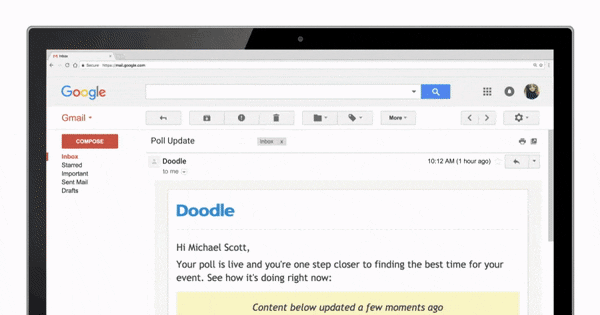
The results
While Doodle didn’t share quantitative data about their AMP for Email campaigns, they did share qualitative data and feedback on AMP for Email. “AMP for Email has allowed us to create more engaging, interactive experiences with Doodle 1:1,” they say.
More ways for fitness companies to use AMP for Email
- Allow subscribers to book or reserve fitness classes from an email. Instead of visiting your website, they can skip a step and book their classes, directly inside an email.
- Display a live list of fitness classes in your area. AMP for Email can show the latest, newly published classes right within the email — no matter when subscribers open the email.
- Add image carousels to your emails. You can show before and after photos for fitness customers or step-by-step fitness instructions with images.
- Allow fitness class attendees to share feedback from an email. Send them an AMP email after class or after they purchase a fitness product with a live review or rating form inside the email.
- Send interactive surveys within an email. Find out more about your fitness customers by sending an interactive survey they can complete from within the email.
Related: Apps in Email for Fitness
That’s a wrap!
AMP for Email isn’t unproven or untested. Thousands of companies actively use it.
Experiments show it leads to great results — like 128% increases in open rates, 500% increases in engagement, 60% increases in conversion rates, and 82% increases in sales. And those are just a handful of the many AMP for Email success stories out there.
Looking for an easy way to test AMP for Email at your own company? Dyspatch can help.
Dyspatch offers drag-and-drop, pre-built AMP email components within its template builder. So you can improve your email performance and stand out in the inbox.
